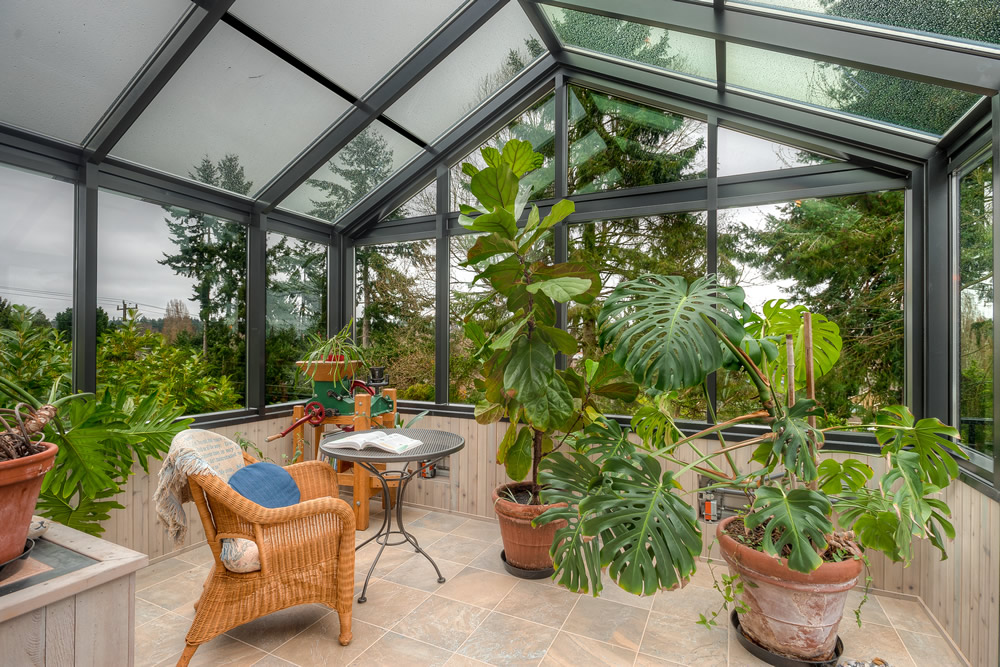Saving Energy with Plants
There are many ways to invest in a house to reduce the amount of power and money needed to keep it comfortable year round such as insulation, air tight construction, and more efficient equipment. However, people sometimes overlook what a well-designed layout of trees, bushes, and other plantings can do to contribute to a passive heating and cooling strategy. Mechanical heating and cooling systems are designed to react to changes of temperature after they occur, but smart landscaping can control how the sun and wind interact with your home and prevent or moderate these temperature swings, leaving less work for your home’s mechanical systems. Strategically planted trees can be used as an aid/alternative to mechanical climate control by providing shade and blocking or guiding the winds that blow across your site, which can help maintain a comfortable home environment. Direct sunlight can provide light and warmth but also has the potential to overheat and over-light a space, making it more expensive to keep comfortable. When planting trees for shade, consider where and when you want sunlight coming into your house. In the northern hemisphere, most sunlight comes from the east, south, and west throughout the day, with afternoon/late day sun being the most intense with the most potential to overheat a house. Shade trees planted to the east and west of the house can protect the interior from the brightest and most direct sunlight of the day. Direct southern sunlight can provide free warmth in the winter but has the potential to overheat the same rooms during the summer. While evergreen trees provide a solid column of shade throughout the year, a leafy deciduous tree with its foliage concentrated on the upper portion of the trunk can provide shade from the high angle summer sun while allowing the lower angle winter sun to shine through to warm and light the house when the trees lose their leaves. Study the differences between these trees throughout the year and use this information to decide which trees you need to get the kind of shade you’re looking for. When laying out any tree shading strategy, take into account the full-grown size and shape of the trees you’re planting as well as the angles of the sun throughout the year so that they can be placed where they will be most effective once established. Trees are also useful for blocking and guiding the winds and breezes that blow across your site throughout the year, though this may be more commonly useful on larger sites. If your house is consistently buffeted by cold winter winds coming from the south, a mixed row of evergreen trees and squat bushes/shrubs can push these winds upwards and allow them to pass over the top of your house without stripping your valuable heat off the walls. Again, deciduous and evergreen trees can serve different roles here, with evergreen trees acting as a solid wall to oncoming winds and deciduous trees allowing winds to twist and wind between their trunks and below their canopies. Both can be useful depending on your goals. If there is a cool summer breeze that blows across your site, rows of plantings can also be used to guide rather than block, leading refreshing breezes into your open windows that would otherwise blow by. Laying out your site’s planting to address both sunlight and wind has the potential to significantly reduce power bills by keeping your house from getting too hot or cold in the first place, reducing the need for mechanical heating or cooling. While trees and bushes can have a dramatic effect on your home’s sun and wind exposure, vines are another effective tool for helping keep your house comfortable with less mechanical assistance. Evergreen vines planted against a sunny exterior wall will raise their leaves to the sun and breathe out water vapor (a process known as transpiration) during the summer, which cools the air around them and allows this cooled air to pass over the walls of your house, which helps keep the temperature down. During the winter, these same evergreen vines will become more dormant and lower their leaves against the wall, which creates a pocket of air which can add a small amount of insulation R-value to those walls. Deciduous vines are another helpful option which can be used with a strategy similar to using deciduous trees for seasonal shade. Allowing deciduous vines to grow over a trellis located along your house’s sunniest southern walls can provide shady exterior and interior areas with gentler, filtered sunlight that will also help keep these areas cooler. In the winter, these vines will die back and allow the more desirable winter sun to shine through and warm your house. If you’ve got a green thumb, you can even use food-producing vines to provide both shade and summer snacks. When choosing plants to execute these ideas, remember to seek out native species wherever possible, as these generally have an easier time getting established and thriving in the local environment without additional watering and caretaking, and can contribute to creating a familiar habitat for the other inhabitants of the local ecosystem. If no local species can meet your needs, make sure the plants chosen are not invasive and do not clash with local food chains. If you are interested in exploring these ideas further, there are many resources available online, at your local nursery, and in books on passive cooling and similar strategies involving landscaping in combination with buildings. Good luck! Photo by Nathaniel Willson. © Nathaniel Willson 2018. All rights reserved.


